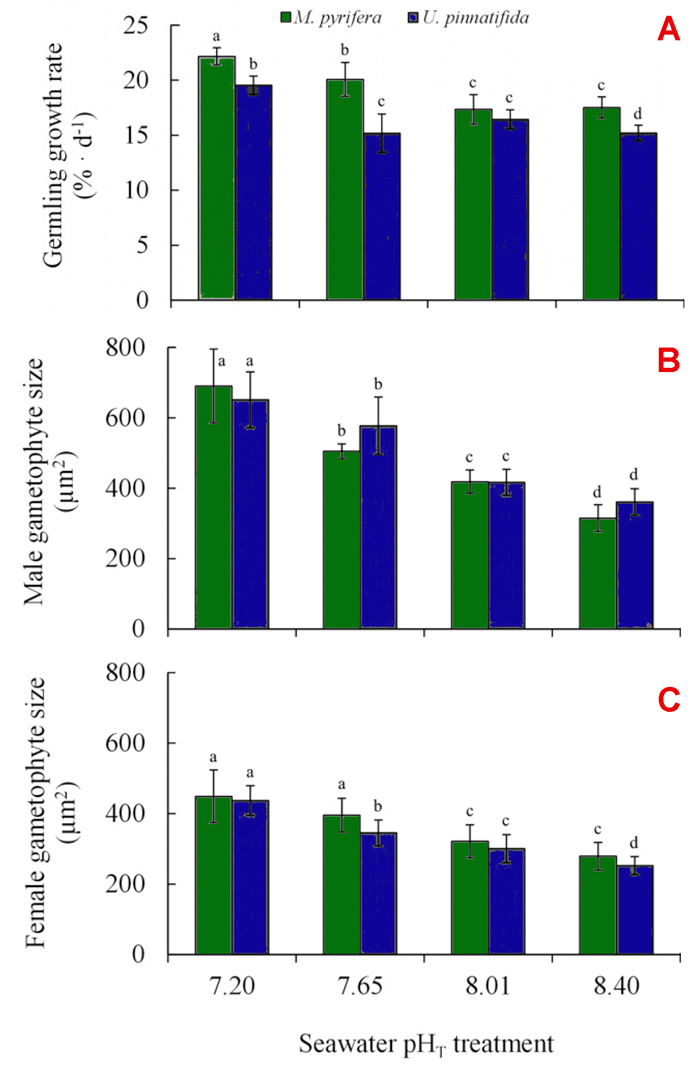| Follow @co2science |
Paper Reviewed
Leal, P.P., Hurd, C.L., Fernández, P.A. and Roleda, M.Y. 2017. Ocean acidification and kelp development: Reduced pH has no negative effects on meiospore germination and gametophyte development of Macrosystis pyrifera and Undaria pinnatifida. Journal of Phycology 53: 557-566.
Non-calcifying macroalgae are key components of many coastal ecosystems thanks to their high productivity and their functioning as both a food source and habitat provider to multiple marine species. Given such prominence in the coastal environment, it is important to understand how macroalgae will respond to projected declines in oceanic pH as a result of increasing atmospheric CO2 concentrations.
The latest research team to investigate this topic was that of Leal et al. (2017), who examined the effects of seawater pH on the ontogenic development of two kelp species (Macrocystis pyrifera and Undaria pinnatifida). More specifically, they studied the effects of four seawater pH treatments, corresponding to preindustrial (8.40), current (8.01) and two future projections (7.65 and 7.20), on the meiospore germination and development of the kelp over a period of 15 days.
In reporting their findings, Leal et al. say that after 5 days, meiospore germination was "significantly higher" at the two reduced pH treatments for both species. After 13 days, the germling growth rates were also significantly higher (see Figure 1). And, by the end of the 15-day experiment, Leal et al. report that both the male and female gametophyte sizes experienced significant increases as pH declined in both kelp species (Figure 1). Consequently, in light of all of these findings, the scientists conclude that future ocean acidification -- if it occurs -- "will not be detrimental for the development of early life history stages of Macrosystis pyrifera and Undaria pinnatifida." In contrast, a return to preindustrial seawater pH values would have a "negative effect" on the growth and development of these two kelp species.

Figure 1. Growth rates of germlings of two kelp species after 13 days of culture (panel A) and the size of male (panel B) and female (panel C) gametophytes at the 15th day of culture. Bars indicate mean ± SD and different letters represent a significant difference between subgroups. Source: Leal et al. (2017).




